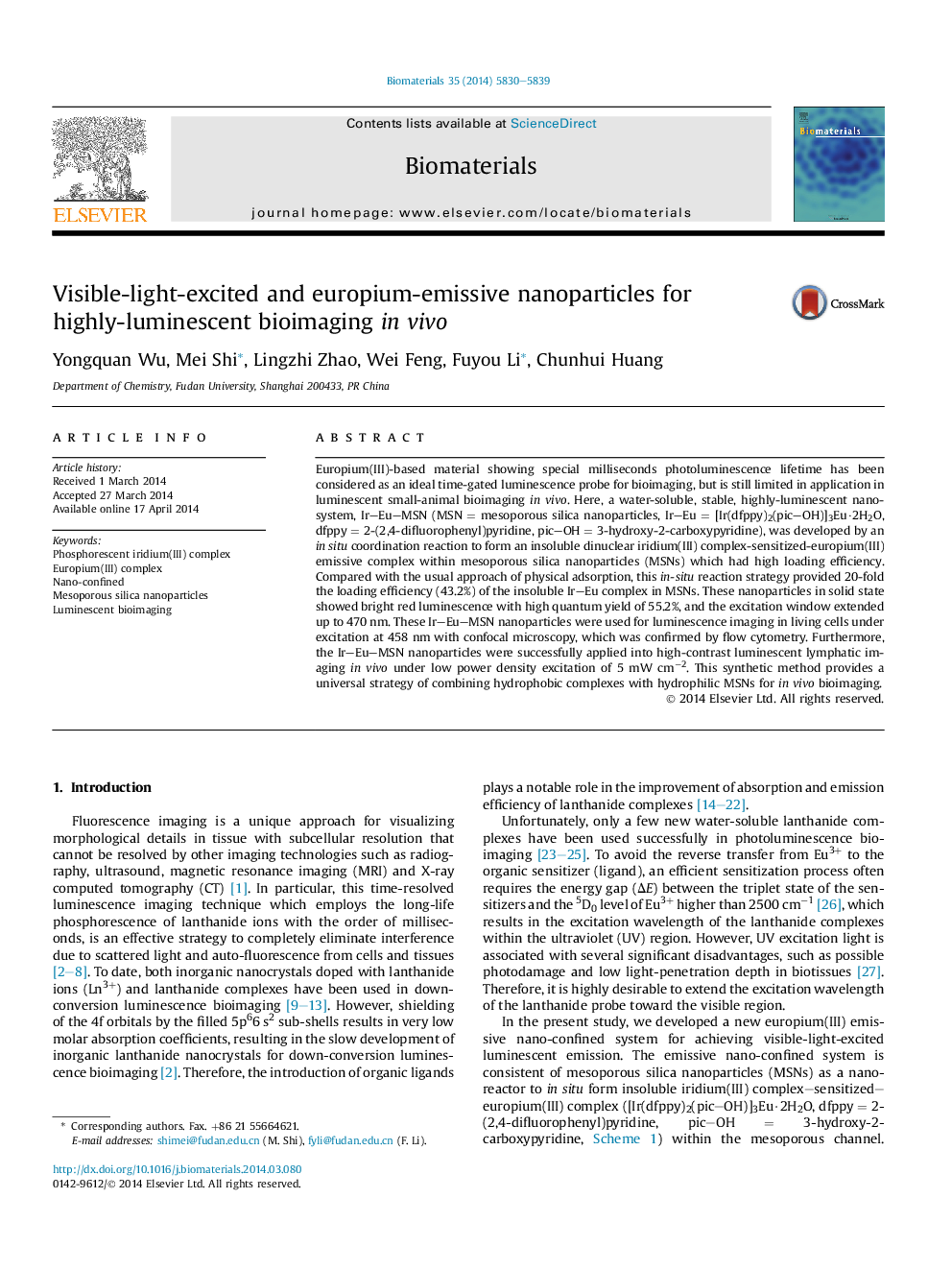| Article ID | Journal | Published Year | Pages | File Type |
|---|---|---|---|---|
| 10227744 | Biomaterials | 2014 | 10 Pages |
Abstract
Europium(III)-based material showing special milliseconds photoluminescence lifetime has been considered as an ideal time-gated luminescence probe for bioimaging, but is still limited in application in luminescent small-animal bioimaging in vivo. Here, a water-soluble, stable, highly-luminescent nanosystem, Ir-Eu-MSN (MSN = mesoporous silica nanoparticles, Ir-Eu = [Ir(dfppy)2(pic-OH)]3Eu·2H2O, dfppy = 2-(2,4-difluorophenyl)pyridine, pic-OH = 3-hydroxy-2-carboxypyridine), was developed by an in situ coordination reaction to form an insoluble dinuclear iridium(III) complex-sensitized-europium(III) emissive complex within mesoporous silica nanoparticles (MSNs) which had high loading efficiency. Compared with the usual approach of physical adsorption, this in-situ reaction strategy provided 20-fold the loading efficiency (43.2%) of the insoluble Ir-Eu complex in MSNs. These nanoparticles in solid state showed bright red luminescence with high quantum yield of 55.2%, and the excitation window extended up to 470 nm. These Ir-Eu-MSN nanoparticles were used for luminescence imaging in living cells under excitation at 458 nm with confocal microscopy, which was confirmed by flow cytometry. Furthermore, the Ir-Eu-MSN nanoparticles were successfully applied into high-contrast luminescent lymphatic imaging in vivo under low power density excitation of 5 mW cmâ2. This synthetic method provides a universal strategy of combining hydrophobic complexes with hydrophilic MSNs for in vivo bioimaging.
Related Topics
Physical Sciences and Engineering
Chemical Engineering
Bioengineering
Authors
Yongquan Wu, Mei Shi, Lingzhi Zhao, Wei Feng, Fuyou Li, Chunhui Huang,
